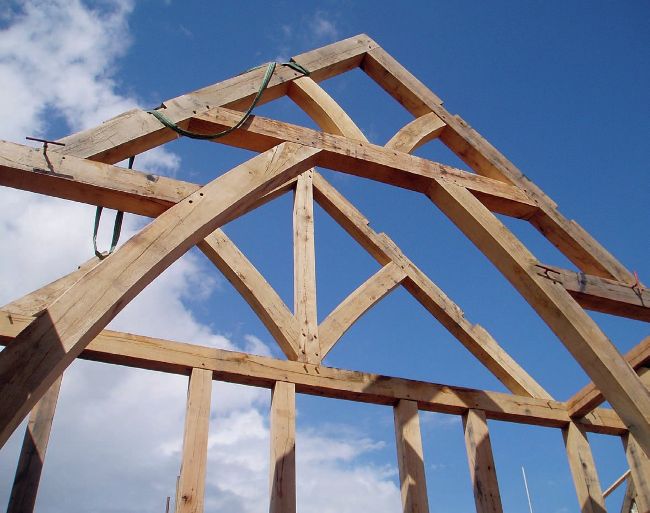DESIGN DETAILS
OAK FRAME TRUSSES
Discover how this characterful structural component can add wow factor to your home. Plus, top tips on how to plan a setup that meets your design goals and budget

This sling brace truss front was designed and built by Oakwrights. The style features sweeping curves, creating a dramatic, cathedral-like vaulted ceiling
One of the principal advantages of selecting oak frame as the structural system for your self build or extension is that the skeleton can be left exposed, both internally and externally. This means that you have a golden opportunity to transform the bones of your house into a stunning design feature. From a structural perspective, trusses perform an important role in supporting the roof and evenly distributing the weight of the structure down into the foundations. Design-wise, the ability to incorporate exposed feature trusses and vaulted ceilings will add instant charm and a luxurious feel to your property. There’s a plethora of truss systems to choose from, with countless variations on each theme that can be adapted to complement the aesthetic you want to create.
The most popular systems tend to be king post designs, queen post or collar trusses. When it comes to choosing your oak frame, aesthetics, budget and building height are a few of the key factors that’ll come into play. For instance, if you you’re required to keep to a low ridge height due to local planning restrictions, achieving a steeply vaulted ceiling with intricate truss detailing might require some clever design work on the part of your architect. In this scenario, one fairly common solution is to go for a one-and-a-half storey house with lofty ceilings, rather than having two condensed levels with a small attic above.